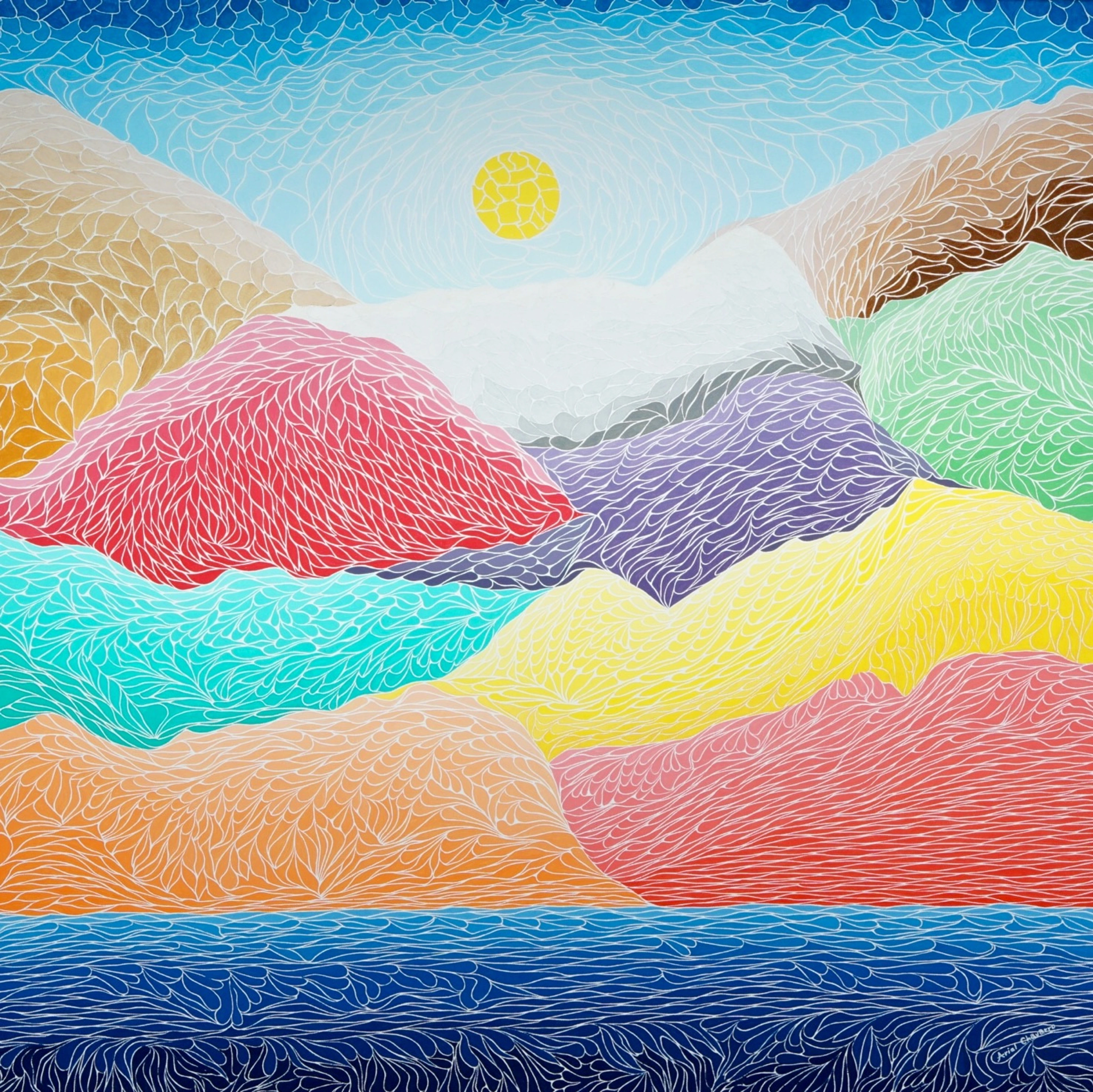
The Wild Ride of Abstract Art: From Rebel Strokes to Coveted Collections
Explore the fascinating evolution of abstract art, from its rebellious beginnings to its status as a coveted collectible, examining key movements, artists, and the intangible value that drives its appeal.
The Wild Ride of Abstract Art: From Rebel Strokes to Coveted Collections
I've always found art to be a curious beast. Sometimes it's a calm, majestic creature, perfectly symmetrical, telling a clear story. Other times, it's a chaotic whirlwind, a splash of color and line that leaves you scratching your head, muttering, "What is that?" For a long time, abstract art fell squarely into that second category for me. I mean, where's the horse? Where's the portrait? Where's the sense?
It took me a while, a good long while, to really feel abstract art. It wasn't about understanding it in a logical, step-by-step way, like assembling IKEA furniture (which, let's be honest, is a form of abstract art in itself until it clicks). No, it was about letting go, letting the colors wash over me, feeling the energy. And once I did, oh boy, the rabbit hole went deep. I remember standing in front of a massive Clyfford Still at a museum once, just a raw explosion of deep reds and blacks. For an hour, I didn't move. It wasn't about what it was, but how it wrapped around me, pulling me into its intensity. That was the moment the door truly opened. Not just into appreciating it, but into wondering: how did we even get here? And why do some of these seemingly random splatters end up on auction blocks for astronomical sums? That shift in perspective, that embrace of the non-representational, even started to subtly influence my own creative process, opening new possibilities for my work. So, pull up a comfy chair, maybe grab a cup of coffee (or a strong espresso, depending on your abstract art tolerance), and let's unravel this mystery together.
The Dawn of Dissent: When Art Decided to Break Free
Imagine a world where every painting had to look exactly like the thing it was depicting. A fruit bowl looked like a fruit bowl. A person looked like a person. Pretty straightforward, right? Think grand historical paintings or perfectly rendered still lifes. This was the reign of academic art, an era defined by the grand Salon system, official exhibitions where rigid rules of beauty and representation dictated what "good" art should be. But then, some artists, with a rebellious glint in their eyes, started to ask: what if it didn't have to? What if art could express something deeper, something beyond mere representation? This wasn't just a stylistic choice; it was a philosophical seismic shift. Moreover, the advent of photography further liberated painting from its purely representational role. If a camera could capture reality with perfect fidelity, what new realms could painting explore? This wasn't a singular event but a series of courageous breaks, each movement building on the last, pushing art further from mere imitation.
The Birth of Pure Feeling: Abstract Expressionism and Its Ancestors
Before Wassily Kandinsky truly dove into pure abstraction, there were other ripples in the artistic pond. Think of Cubism, which shattered objects into geometric planes, forcing viewers to see multiple perspectives at once, fundamentally challenging the single-point perspective that had defined Western art for centuries and paving the way for non-objective forms. It's almost like breaking down a familiar subject into its raw energies, a process I often feel when trying to capture the multi-faceted essence of a landscape or an emotion in my own work. You can explore its origins in an ultimate guide to Cubism. Or Orphism, an offshoot of Expressionism that, pioneered by artists like Robert Delaunay, focused on pure color and form, aiming to evoke emotion through a symphony of hues, much like music – a topic fascinatingly explored in an ultimate guide to Expressionism. This emphasis on color as a primary expressive tool, detached from descriptive purpose and often influenced by the era's spiritual movements, was a critical step. And Suprematism, founded by Kazimir Malevich, championed pure geometric forms and fundamental colors, stripping art down to its most basic spiritual essence, asserting art's autonomy from external reality, a stark reaction to the chaos of war and revolution.
Other movements also pushed the boundaries of representation. Futurism, for instance, with its dynamic portrayal of motion and industrial forms, a nod to the rapidly changing modern world, used fragmented compositions to convey speed and modernity, breaking from static depictions. And Constructivism explored geometric abstraction for utilitarian purposes, using innovative materials and forms to serve social and revolutionary ideals, demonstrating that art didn't need to depict reality to be meaningful and functional. These movements, in their diverse approaches, were all part of that philosophical seismic shift, preparing the ground for complete abstraction.
Kandinsky, for instance, believed art could be like music – a symphony of color and form, evoking emotion directly. He moved beyond merely deconstructing forms like the Cubists or using color expressively like the Orphists, aiming for a complete liberation from subject matter. No need for a recognizable subject. He was essentially telling us, "Forget the sheet music; just feel the rhythm." This idea didn't spring from a vacuum. Earlier, movements like Impressionism, while still representational, quietly began a revolution in how we saw color. They showed how light and hue alone could evoke mood and atmosphere, freeing color from purely descriptive roles. This liberation of color as an emotional language, deeply rooted in the psychology of color in Impressionist painting, was a critical, often overlooked, stepping stone for abstract artists who would later make color the subject, exploring the emotional language of color in abstract art.
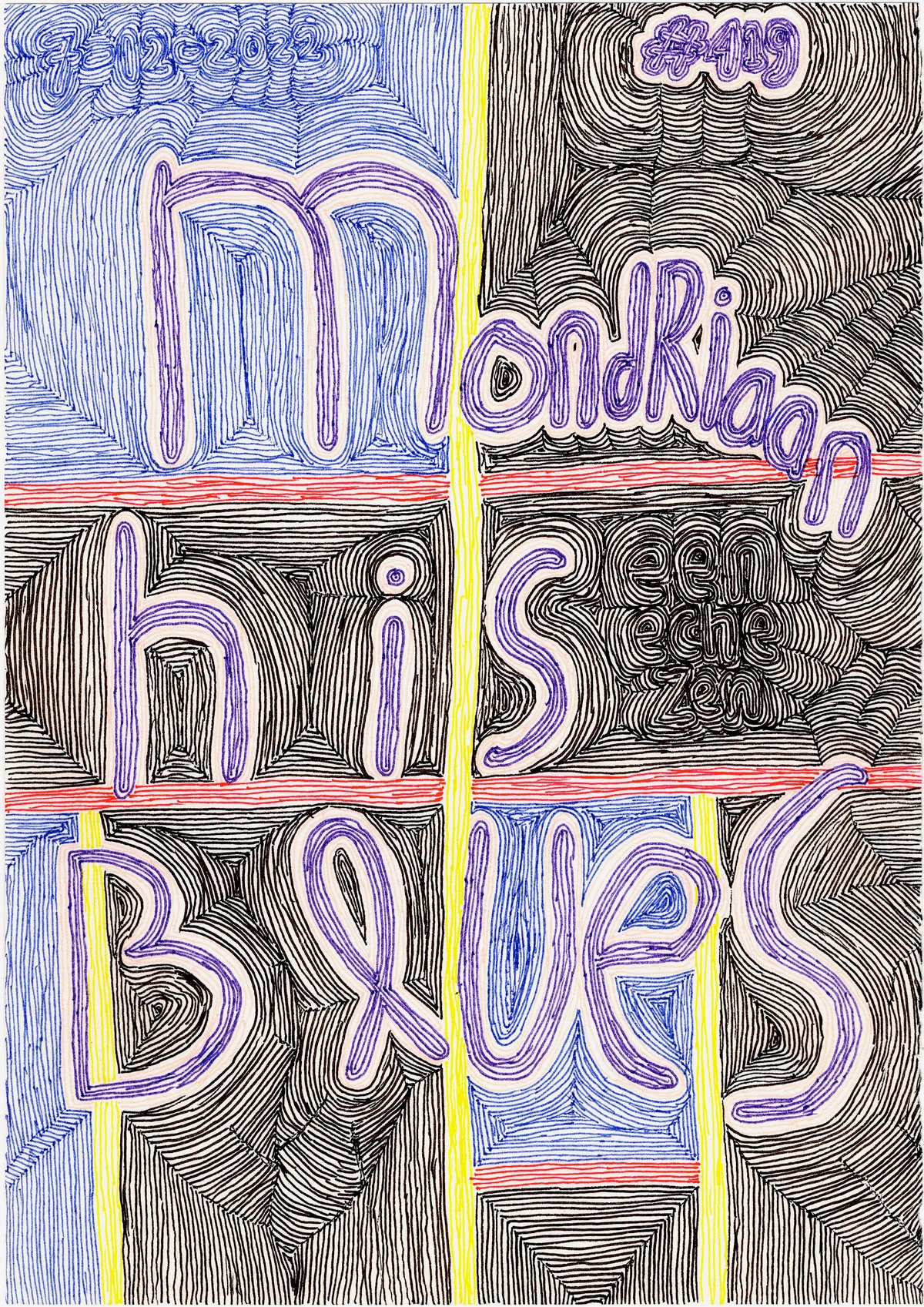
Printerval.com, licence
This early push towards non-representational art really set the stage. It opened the door for the explosive energy of Abstract Expressionism, particularly in post-World War II America, marking a significant shift in the global art world's center from Paris to New York. Artists like Jackson Pollock, with his dynamic "action paintings" – a revolutionary technique involving dripping, pouring, and splattering paint directly onto large canvases laid on the floor, capturing the raw energy of creation – and Mark Rothko, whose contemplative color fields invited profound introspection, demonstrated the movement's diverse yet equally powerful expressions. Suddenly, art wasn't just decorative; it was a raw burst of emotion, a profound internal dialogue, a pure outpouring of the artist's inner world. To truly immerse yourself in that fascinating period, explore our comprehensive ultimate guide to Abstract Expressionism.

https://www.flickr.com/photos/abstract-art-fons/30634352376, licence
Order in the Chaos: De Stijl and the Power of Geometry
But not all abstract art is about wild abandon. While the previous movements explored abstraction through expression and dynamism, another significant path emerged, one rooted in rigorous order and harmony. And here, I have to tip my hat to the De Stijl movement, particularly the work of Piet Mondrian. Remember those primary colors and black grids? It's like the universe decided to simplify its entire existence into its most fundamental building blocks. Mondrian, along with fellow artists like Theo van Doesburg who extended these principles into architecture and design, wasn't just painting lines; they were searching for universal truths, a cosmic balance, driven by a desire for spiritual purity and a new societal aesthetic in the wake of war. Their vision went beyond the canvas, influencing architecture, furniture, and graphic design, shaping the aesthetic of modernism itself. Even in my own creative journey, where my work often embraces a more fluid chaos, there's a part of me that constantly strives for a similar underlying balance and essential purity, albeit expressed through different means. It's a reminder that structure can be found, and created, in unexpected places.
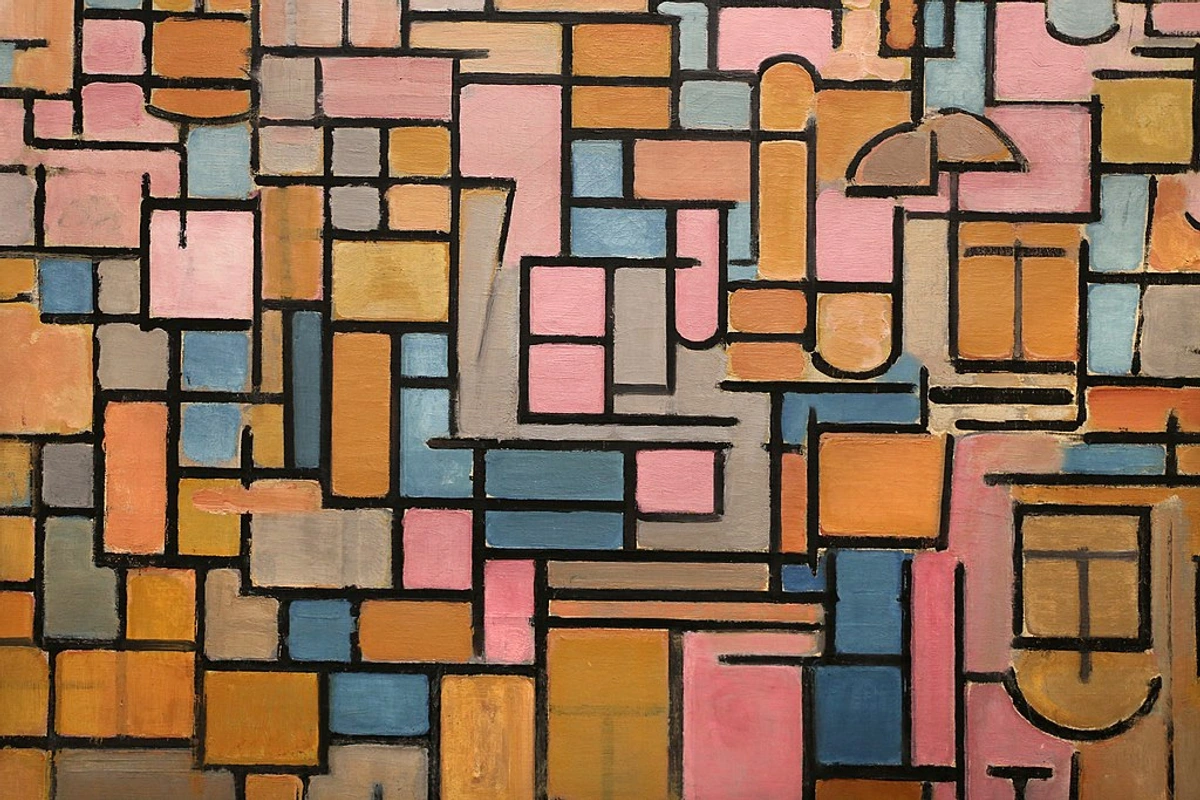
https://commons.wikimedia.org/wiki/File:Piet_mondrian,_tableau_III,_composizione_in_ovale,_1914_%28stedelijk_museum_amsterdam%29_02.jpg, licence
I used to think, "Well, that looks easy enough." (And yes, my own attempts quickly devolved into something closer to a toddler's block tower than a cosmic balance.) But try to recreate the precision, the balance, the quiet power of a Mondrian. It's deceptively simple, yet profoundly complex. It's a testament to the idea that sometimes less truly is more, especially when you're distilling the very essence of form and color. You can explore more about the broader history of abstract art if you're curious about its entire journey.
Abstract Art Today: Beyond the Canvas, Into the Collection
Fast forward to today, and abstract art is as vibrant and diverse as ever. It's no longer just about expression or geometry; it's about pushing boundaries, questioning norms, and sometimes, even just about the sheer joy of visual exploration. Contemporary artists are taking the abstract language and speaking in entirely new dialects, often intersecting with conceptual art, minimalism, and installation art, or even engaging with social and political commentary. For example, artists might use abstract forms to represent complex societal inequalities or the fragmented nature of modern identity, allowing for nuanced interpretations without explicit narrative. Beyond traditional painting, we now see abstract art expressed through sculpture, digital art, and large-scale installations, demonstrating its boundless adaptability – with even AI and generative art joining the conversation, using complex algorithms to create unpredictable yet structured forms, pushing the very definition of "artist." Sometimes, in my own studio, I find myself sketching out a new piece, and it feels like a mini-meditation, a quiet conversation between my hand and the canvas, exploring how a simple line can convey motion or a sudden burst of color can feel like a whispered secret.
Artists like Gerhard Richter, with his mesmerizing squeegee paintings, or Christopher Wool, with his bold, sometimes stark, text-based or patterned abstractions, show us how the genre continues to reinvent itself. It's less about a single, unified movement now and more about individual artists exploring their unique vision within the vast realm of non-representational art. If you want to delve deeper into artists like Gerhard Richter, we have a dedicated ultimate guide to Gerhard Richter.

https://live.staticflickr.com/65535/53064827119_1b7c27cd96_b.jpg, licence
Think of the expressive freedom in Cecily Brown's swirling compositions or the intricate, almost calligraphic energy in Zeng Fanzhi's abstract works. Each artist brings their own narrative, their own emotional landscape, to the non-representational form. It's truly fascinating to see how far the genre has come, isn't it? For those interested in artists like Christopher Wool, explore our ultimate guide to Christopher Wool, and for Zeng Fanzhi, there's an ultimate guide to Zeng Fanzhi. Seeing such diverse approaches constantly challenges and expands my own perception of what's possible, influencing the fluidity and spontaneous energy I strive for in my own colorful and often abstract pieces.
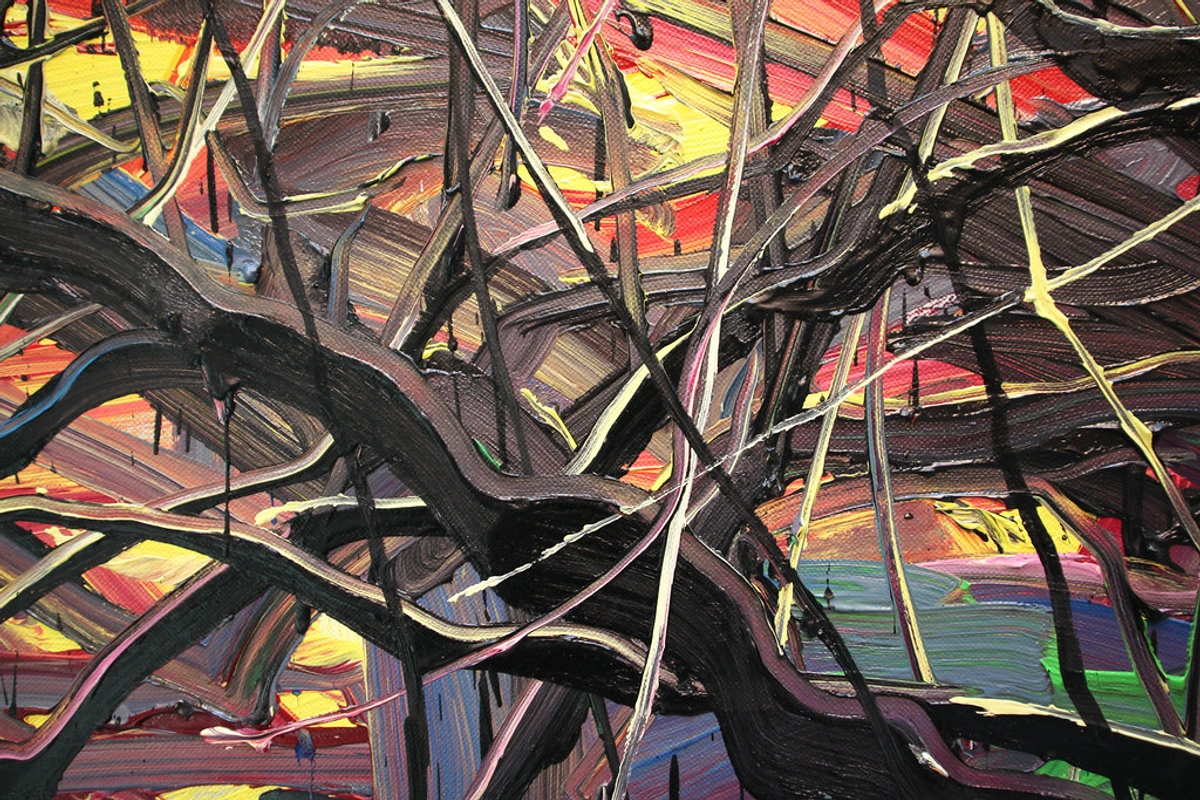
https://live.staticflickr.com/2875/8866942510_439379d853_b.jpg, licence
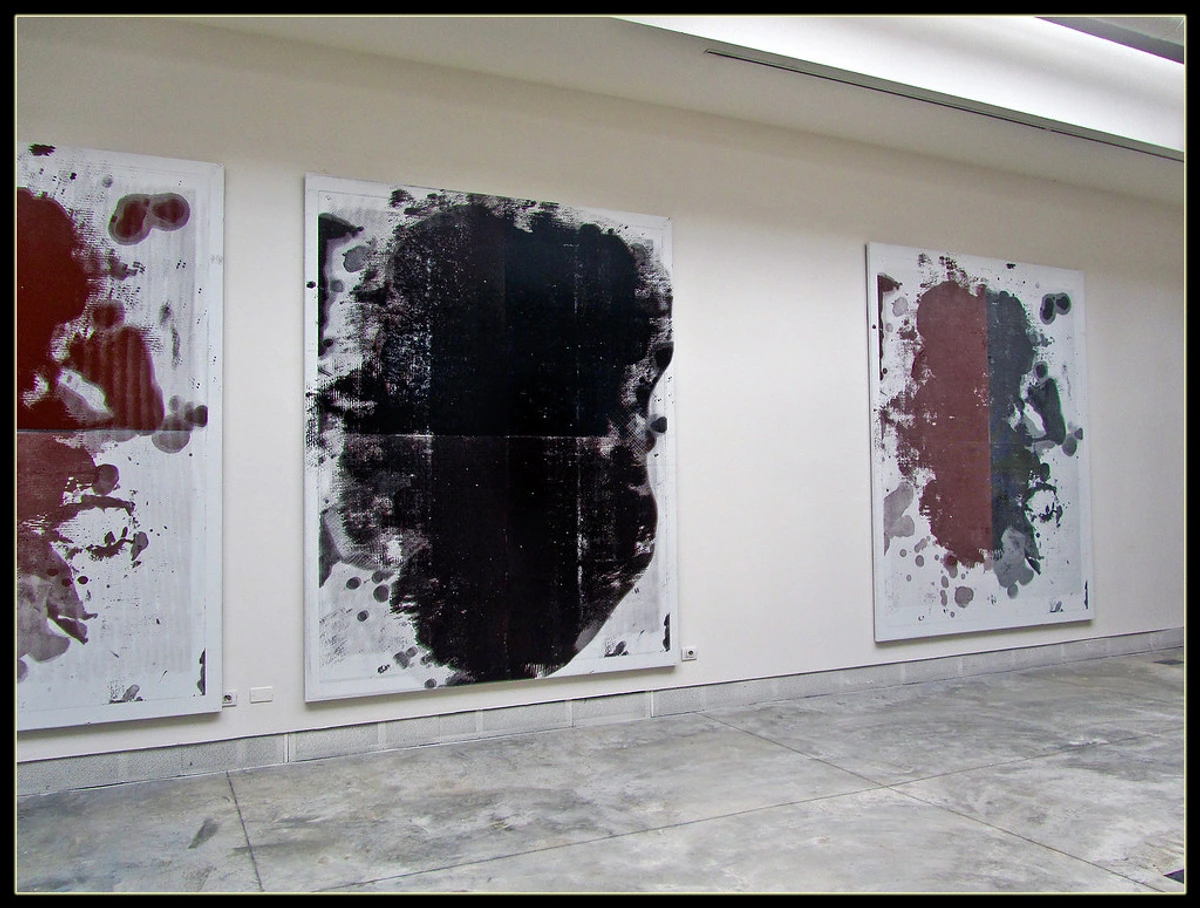
https://www.flickr.com/photos/christopher_wool_fan/6087778411, licence
The Collectible Cachet: Why Abstract Art Commands Attention (and Price Tags)
So, we've talked about how abstract art evolved. But how did we get from a rebellious splash to a multi-million-dollar canvas? Is it just hype, or is there something more? From my perspective, it's a blend of factors, often surprisingly human. It’s a peculiar dance, isn't it? How a piece that might initially make you wonder if the artist merely spilled paint can end up commanding prices higher than a small island. I often find myself grinning at the sheer audacity of it, even as I deeply appreciate the work. And, in a way, it reflects the very aspiration I have for my own work – that it resonates so deeply it becomes an essential, cherished part of someone's life, transcending mere decoration.
The Allure of the Intangible
How does a canvas with seemingly random marks command millions? Part of it, I think, is the very thing that initially baffled me: its intangibility. Abstract art doesn't tell you what to see; it asks you how you feel. It engages a different part of your brain, your intuition, your personal experience. This makes it incredibly personal, and what's deeply personal often becomes deeply valuable. Collecting abstract art isn't just acquiring an object; it's acquiring:
- A conversation piece: sparking dialogue and debate.
- A mood enhancer: influencing the atmosphere of a space.
- A visual anchor for introspection: inviting personal reflection.
Historical Significance and Rarity
Then there's the undeniable historical significance. Early abstract works by pioneers like Kandinsky or Mondrian aren't just paintings; they're milestones in art history. They represent moments of radical departure, courageous innovation. Rarity plays a huge role here too. Original works from pivotal moments in art history are, by definition, scarce, and scarcity drives value. We've seen works by titans like Jackson Pollock or Mark Rothko shatter auction records, reaching astronomical figures that reflect not just their beauty, but their irrefutable place in the cultural narrative. It's supply and demand, but with a cultural halo around it.
Provenance and the Artist's Journey
Like any valuable collectible, the story behind an abstract piece matters. Who owned it? Where has it been displayed? And crucially, what is the artist's own journey? Understanding the artist's timeline or the significance of their work adds immense depth and, yes, value. A well-documented history, or 'provenance,' can significantly impact a work's price. It's like a pedigree for art. Beyond the individual piece, the art world ecosystem itself plays a vital role. Major galleries, international art fairs, and influential critics often act as gatekeepers and tastemakers, shaping narratives and establishing market trends. Their endorsement can significantly elevate an artist's profile and, consequently, the value of their work.
The Human Connection: Investing in Emotion
Ultimately, collecting art, especially abstract art, is often an emotional investment. It's about connecting with something that speaks to you on a non-verbal level. I often think about my own creative process; it's rarely a linear path. It's a dance between intention and accident, control and chaos. For instance, sometimes a single vibrant color seems to resist all others on the canvas, creating a tension that only resolves after days of subtle adjustments – a small, personal battle that mirrors the larger dialogues in abstract art. When I see an abstract piece that resonates, it feels like a glimpse into another artist's similar dance. And sometimes, you just want to take that glimpse home with you. My own journey as an artist, grappling with colors and forms, trying to articulate the inarticulable on canvas, deeply informs my understanding of this connection collectors seek. It’s a shared silent language. I remember seeing a small, vibrant abstract piece by an unknown artist at a local fair years ago. It hummed with an energy I couldn't quite place, but it felt... essential. I bought it on impulse, and it still hangs in my studio, a quiet reminder that sometimes the most profound connections are the ones you can't articulate.
If you're ever curious about bringing a piece of this abstract world into your own space, remember to check out the art for sale on my site.
Frequently Asked Questions About Abstract Art & Collecting
Let's tackle some of those lingering questions you might have, because I know I had them too.
Q: How do you know if an abstract painting is "good"?
A: Ah, the million-dollar question! For me, a "good" abstract painting isn't necessarily about objective beauty (though that helps!). It's about its ability to evoke a response. Does it make you feel something? Does it draw you in? Does it hold your attention? Is there a sense of balance, tension, or deliberate composition, even if it looks chaotic? Often, the artist's intent, their profound thought, and a mastery of their medium and abstract elements shine through. This mastery isn't just about technical skill in rendering; it's about a deep understanding of composition, color theory, texture, and line that allows the artist to evoke specific feelings or ideas without literal depiction. It's a bit like judging a piece of music – you might not understand the theory, but you know if it moves you. I used to walk past certain pieces, thinking they were just 'splatters.' But then I'd see one again, maybe in a different light, or after hearing the artist's story, and suddenly, a subtle rhythm or a hidden tension would emerge. It's like a complex melody that takes a few listens to truly appreciate. For a deeper dive into what makes these works compelling, explore what makes abstract art compelling.
Q: Is abstract art a good investment?
A: Like any art, it can be. Investment potential largely depends on the artist's reputation, their market, the piece's rarity, condition, and provenance. Early works by established masters, or pieces by emerging artists with significant buzz, often appreciate in value. However, I always say, buy art because you love it, because it speaks to you. If you're serious about the investment aspect, I'd strongly suggest consulting expert appraisers or art advisors; the art market is complex. If it appreciates, that's a wonderful bonus. Don't buy it purely for speculation unless you're a seasoned art market professional. The true value is in the joy it brings.
Q: What's the best way to start collecting abstract art?
A: Start by looking! Here are some key steps:
Step | Description |
|---|---|
| Visit Museums | Immerse yourself in diverse collections and historical works. |
| Explore Galleries | Discover local and international artists, like those in local art galleries. |
| Attend Fairs | Engage with artists directly and see new work firsthand. |
| Read Up | Educate yourself on movements and artists; our guide to modern artists is a great start. |
| Online Platforms | Browse digital collections and auction sites. |
Don't feel pressured to buy something expensive right away. Many emerging artists offer fantastic work at accessible prices. Trust your gut, and enjoy the journey of discovery. For a foundational understanding, consider our decoding abstraction: a beginner's guide to understanding non-representational art.
Q: How does your own abstract art fit into this rich history?
A: That's a fascinating question, and one I often ponder! While I draw immense inspiration from the pioneers and contemporary masters we've discussed, my own work isn't about replicating historical movements. Instead, I see it as a personal dialogue within this expansive lineage. I explore the emotional language of color and the dynamism of form, much like the Abstract Expressionists, but filtered through my unique lens, aiming to capture moments of pure energy and feeling. My pieces are about inviting viewers to connect with a visual experience that transcends literal meaning, just as the abstract masters intended. It's my small contribution to the ongoing, wild conversation of abstraction.
Q: What are some common misconceptions about abstract art?
A: Perhaps the most common is 'My kid could do that!' or 'It's just random' or 'It's meaningless.' But this often misses the decades of artistic training, the profound philosophical thought, or the sheer mastery of material behind the seeming simplicity. It's rarely 'meaningless'; it's often packed with highly personal or universal meaning, just not in a literal, narrative sense. Abstract art demands participation; it asks you to bring your own meaning to the table, which can be challenging but ultimately rewarding.
Q: How can I train my eye to appreciate abstract art more?
A: It's a muscle you build! Don't just look for an object. Try focusing on individual elements: the texture of the paint, the direction of the brushstrokes, how colors interact, the balance (or imbalance) of shapes. Step back, then lean in close. Observe the artwork from different distances or in varying lighting conditions to discover new details and perspectives. Read about the artist's process or the context of the movement. Most importantly, allow yourself to feel. Let go of the need to 'understand' and just experience it. It's a dialogue, not a dictation. We also have tips for interpreting abstract art.
Q: Are there different types or styles of abstract art?
A: Absolutely! Abstract art is a vast umbrella. Some common categories include:
- Geometric Abstraction: Characterized by geometric forms, lines, and planes (e.g., De Stijl).
- Lyrical Abstraction / Abstract Expressionism: Focuses on spontaneous, expressive brushstrokes and emotional content (e.g., Action Painting by Pollock, Color Field by Rothko).
- Color Field Painting: Large fields of solid color, emphasizing color's emotional power.
- Post-Painterly Abstraction: A cooler, more restrained approach than Abstract Expressionism, often with hard-edge forms and flatter applications of color.
- Minimalism: Reduces art to its most essential elements, often geometric, focusing on the viewer's experience of space and material.
Each type offers a different entry point into the non-representational world, inviting unique forms of engagement.
My Final Thoughts: The Unending Evolution of a Captivating Companion
Stepping back, the evolution of abstract art isn't just a linear progression through styles; it's a testament to the human spirit's unending quest for new ways to see, feel, and express. From the stark purity of a Mondrian to the vibrant chaos of a Richter, each movement, each artist, has added another layer to this rich, non-representational tapestry. It’s a journey I'm endlessly fascinated by, both as an artist and as an admirer. And for me, that's what makes this 'captivating companion' of abstract art so endlessly enthralling, its true collectible value lying beyond the numbers and the market buzz: in its ability to constantly surprise, challenge, and connect with us on a profoundly intuitive level. It's the art that keeps asking questions, and sometimes, those are the best kinds of conversations to have. So, next time you encounter a piece of abstract art, instead of asking "What is it?" try asking "How does it make me feel?" You might be surprised by the answer, and perhaps, by the journey it takes you on, a journey I'm often on myself with my own work. Keep exploring, keep feeling, and see where abstraction leads you next.
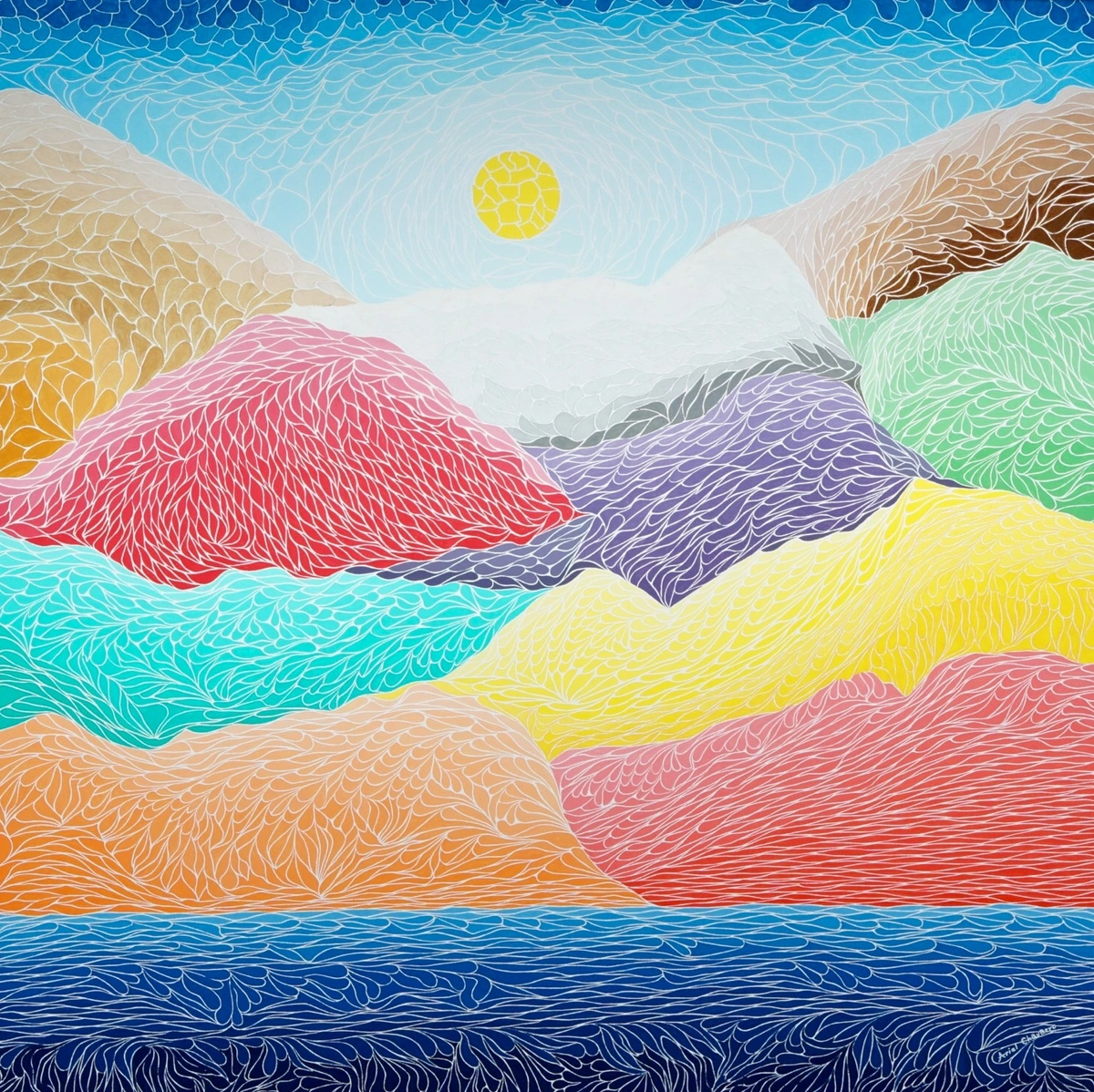
https://commons.wikimedia.org/wiki/File:The_Creation_Of_The_Mountains.jpg, licence




